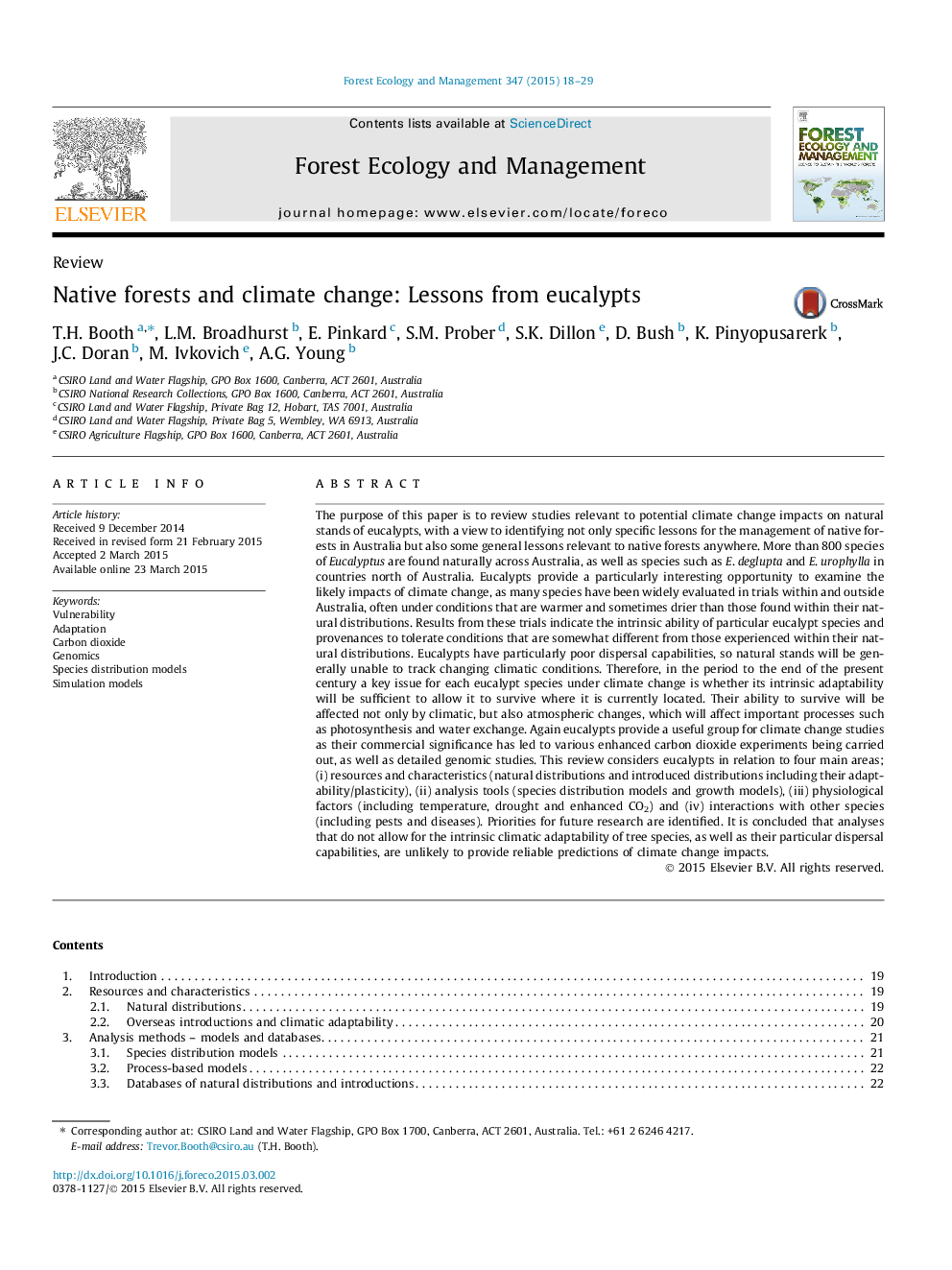| Article ID | Journal | Published Year | Pages | File Type |
|---|---|---|---|---|
| 86241 | Forest Ecology and Management | 2015 | 12 Pages |
•Eucalypt resources, analysis tools, physiology and interactions with other species are described.•The Atlas of Living Australia allows the bioclimatology of native eucalypt forests to be analysed.•Climatic adaptability of many eucalypt species can be measured from trials around the world.•Most previous analyses of climatic change have ignored tree species intrinsic climatic adaptability.•Understanding climatic adaptability and dispersal potential is essential for predicting impacts.
The purpose of this paper is to review studies relevant to potential climate change impacts on natural stands of eucalypts, with a view to identifying not only specific lessons for the management of native forests in Australia but also some general lessons relevant to native forests anywhere. More than 800 species of Eucalyptus are found naturally across Australia, as well as species such as E. deglupta and E. urophylla in countries north of Australia. Eucalypts provide a particularly interesting opportunity to examine the likely impacts of climate change, as many species have been widely evaluated in trials within and outside Australia, often under conditions that are warmer and sometimes drier than those found within their natural distributions. Results from these trials indicate the intrinsic ability of particular eucalypt species and provenances to tolerate conditions that are somewhat different from those experienced within their natural distributions. Eucalypts have particularly poor dispersal capabilities, so natural stands will be generally unable to track changing climatic conditions. Therefore, in the period to the end of the present century a key issue for each eucalypt species under climate change is whether its intrinsic adaptability will be sufficient to allow it to survive where it is currently located. Their ability to survive will be affected not only by climatic, but also atmospheric changes, which will affect important processes such as photosynthesis and water exchange. Again eucalypts provide a useful group for climate change studies as their commercial significance has led to various enhanced carbon dioxide experiments being carried out, as well as detailed genomic studies. This review considers eucalypts in relation to four main areas; (i) resources and characteristics (natural distributions and introduced distributions including their adaptability/plasticity), (ii) analysis tools (species distribution models and growth models), (iii) physiological factors (including temperature, drought and enhanced CO2) and (iv) interactions with other species (including pests and diseases). Priorities for future research are identified. It is concluded that analyses that do not allow for the intrinsic climatic adaptability of tree species, as well as their particular dispersal capabilities, are unlikely to provide reliable predictions of climate change impacts.
